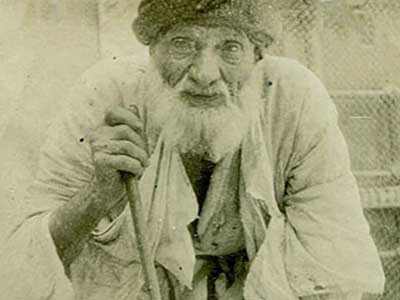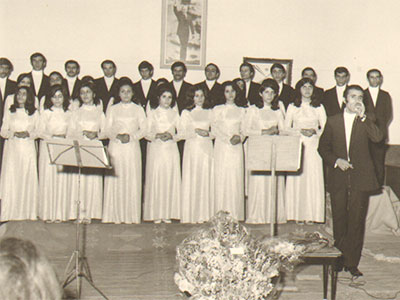Who Are The Assyrians?
Assyrians are indigenous to northern Mesopotamia, specifically ancient Assyria and its environs, part of today’s northern Iraq, northwest Iran, southeast Turkey, and northwest Syria. Several Assyrian villages and towns as well as their ancient culture continue to exist in this original homeland, but they are currently under tremendous threat causing many Assyrians to leave this region. Today, Assyrians are a transnational population that exists throughout the world from Russia and Georgia to the Middle East, the United State, Australia and New Zealand. Assyrian communities generally integrate well into their respective societies and contribute to these new cultures, economies, and politics. Many Assyrians today affiliate with the Assyrian Church of the East, the Chaldean Catholic Church, the Syrian Orthodox Church, and the Syrian Catholic Church, all Christian communities. In the past two millennia, the Assyrians have been primarily known by their religious designations, which are in contrast to the predominantly Islamic societies in which they live.
Though dispersed and living distant from each other, Assyrians are united by their shared culture, ancestral homeland, and language, which are among the oldest in the Middle East. They speak Assyrian language, also referred to as Neo-Aramaic or Neo-Syriac with heavy Akkadian. Both Akkadian and Aramaic were official languages of the ancient Neo-Assyrian Empire that ruled vast parts of the Middle East from ca. 934 to 600 BC. Following the fall of the Assyrian empire and into the Persian, Hellenistic, and Roman times, Assyrian people, culture, and language persisted in the region. From ancient Arba’ilu to Arbela during the Christian period in the ecclesiastical province of Adiabene (Hadiab) between the 5th to 15th centuries AD, the presence and culture of the people of upper Mesopotamia endured. In the Middle Ages, Assyrian cultural and scientific contribution continued through the work of Assyrian physicians and scholars such as Hunayn ibn Ishaq, Sergius of Reshaina and others. Ibn Ishaq, for instance, translated master Greek works into Syriac and Arabic and was placed in charge of the Bayt al Hikmah (House of Wisdom) in Baghdad by the Abbasid Caliphs Al-Ma’mun.
Assyrian’s modern history is one of survival and continuity. Wars, displacement, and migration are integral part of the Assyrian history in the late 19th and early 20th centuries to the present. Assyrians were among the populations that were targeted by the Ottomans during the Armenian Genocide, when hundreds of thousands were killed, villages destroyed, land confiscated, and thousands were forced to migrate to the neighboring countries as well as the United State. This deportation resulted in the formation of communities outside the Assyrian ancestral homeland, in regions such as Urmia in northeastern Iran and the Khabur region in western Syria. With the rise of the nation states in the Middle East and the establishment of the state of Iraq in 1932, Assyrians, like others, hoped for equal rights and peaceful living. Yet again, under complicated geopolitical circumstances, some 3000 Assyrians were murdered and hundreds of villages burned and confiscated by the Iraqi army in what came to be known as Semele Massacre. This first massacre in the history of the modern state of Iraq was brutal and took great toll on the Assyrian population and its culture, reducing these communities to survival mode of living. It wasn’t until decades later, in the late sixties and early seventies, that the Assyrians were granted some cultural and linguistic rights in Iraq. While these rights allowed for civil organizations to form on the basis of cultural, artistic, social, and linguistic purposes, they prevented the use of the ethnic name “Assyrian” and Iraqi Assyrians were re-categorized as “Syriac-speaking citizens”. Still, Assyrian academics, linguists, poets, artists, singers, and athletes took advantage of this small opportunity, forming cultural organizations and clubs and publishing books, magazines, and newspapers, including Mordinna Aturaya (the Educated Assyrian) and others.
The Assyrian community flourished culturally, economically, and politically during the less oppressive political climate in Iran. Assyrian communities in the Lake Urmia region constituted several villages and town that had their own schools where thousands of Assyrian students were educated in the early 20th century. Assyrian intellectuals played an important role through the publication of journals such as Zahrira-d-Bahra (Ray of Light) and Qala-d-Shrara (the Voice of Turth) among others. In Syria and Turkey, Assyrians formed comprehensive communities and settlements. Although oppressed under various political regimes, these communities continued to exist and their culture and folklore persisted. In 2014, Turkey’s Assyrian community regained the right to start a school; 86 years after their original schools were closed.
The United States is home for the largest Assyrian community in diaspora. This community dates back to as early as the late 19th century with the first Assyrian recorded in 1889. Following WWI many Assyrians pursued refuge in the United States and settled in areas such as Massachusetts, Chicago, Michigan, California, and New Jersey. While Assyrians integrate well in these new communities, they are eager to preserve their ancient culture, language, and ties to ancestral homeland. As a result, Assyrian American communities focus their efforts on establishing cultural centers and annual events where members of the community gather and share their old traditions. Several communities have established schools where they teach their children Assyrian language. Various civil organizations, such as the Assyrian Foundation of America, are dedicated to support and promote Assyrian students and scholars in various academic and professional fields. Through journals such as Journal of Assyrian Academic Studies, Assyrian writers and poets have the opportunity to channel their voice and share their thoughts and achievements with the world.
The cultural and artistic contribution of the Assyrians wherever they lived never halt, even now as yet another episode of hardship caused by current geopolitics resulting in turmoil in the Assyrian’s ancestral homeland. The Assyrian people and culture are currently under a vicious attack in areas such as the Nineveh Plains, where Assyrian communities lived for thousands of years. Not only are Assyrian lives and homeland at stake, but also the very ancient culture that Assyrians have preserved for so long. Historical churches and monasteries, ancient cities and temples, as well as precious rare works of art are under threat of destruction, looting and illicit trafficking. It is in such circumstances that the AAI was born to take action toward promoting, preserving, and spotlighting Assyrian art, culture, and heritage.




















